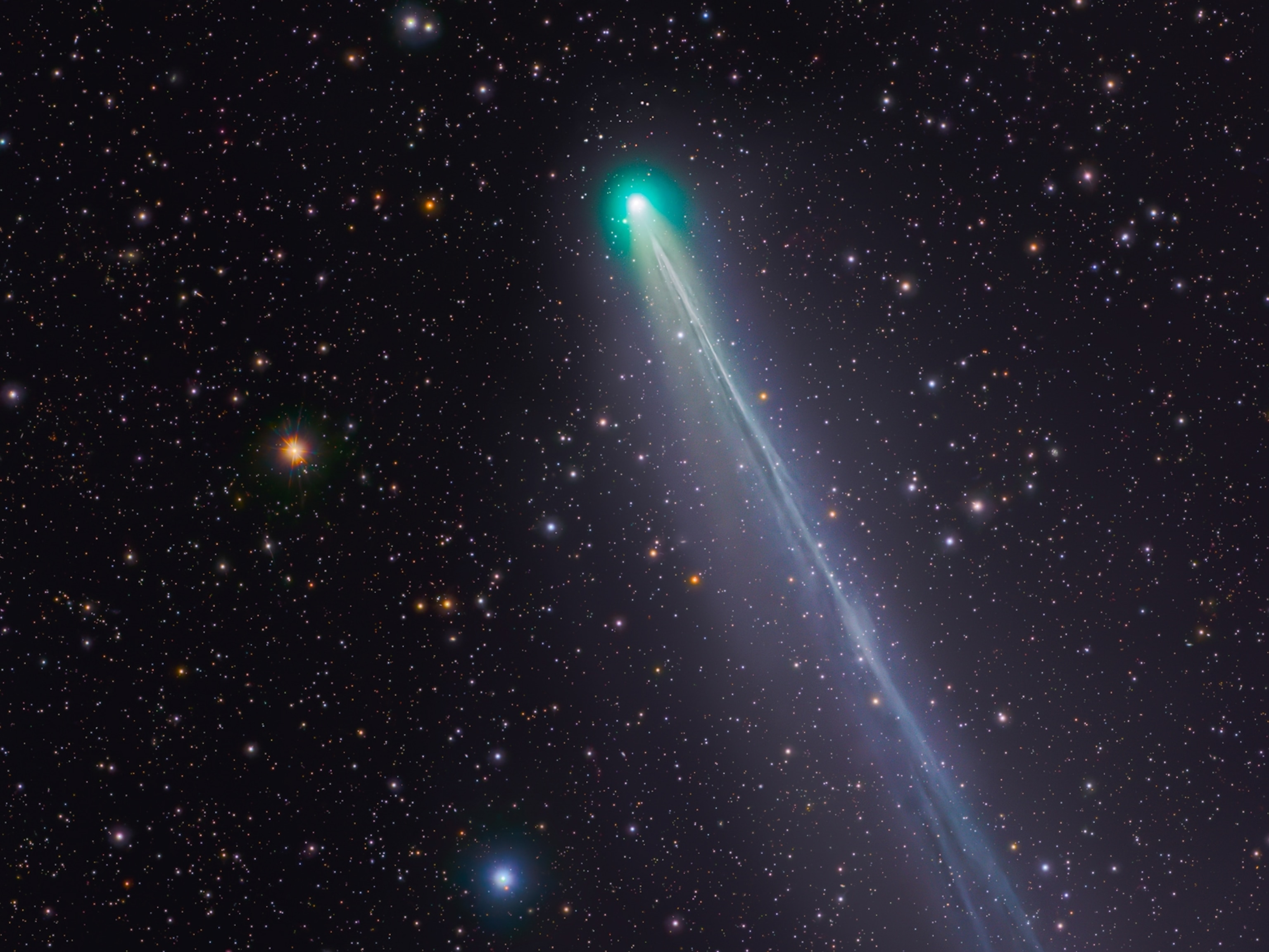
Summer Solstice 2013: Why It's the First Day of Summer
This year's summer solstice will be followed by the year's largest supermoon.
That's because the timing of the summer solstice depends on when the sun reaches its farthest point north of the Equator, and that varies from year to year.
This year's summer solstice falls on Friday, June 21, at 1:04 a.m. ET, but it will start on Thursday night for places in North America west of the Central Time Zone.
This year's summer solstice also stands out because it will be followed shortly after by the largest "supermoon" of the year. In the early hours of Sunday, June 23, the moon will officially reach its full phase and will be the closest to Earth that it will be all year.
While the astrology-minded might be tempted to see significance in the timing of the two celestial events, there is no connection, said Mark Hammergren, an astronomer at the Adler Planetarium in Chicago.
"People draw this connection between [the supermoon] and the summer solstice, but it's completely coincidental," he added.
Highest Sun at High Noon
The solstices are the results of Earth's north-south axis being tilted 23.4 degrees relative to the ecliptic, the plane of our solar system. This tilt causes different amounts of sunlight to reach different regions of the planet during Earth's yearlong orbit around the sun.
On the summer solstice this year, the North Pole is tipped more toward the sun than on any other day of 2013. (The opposite holds true for the Southern Hemisphere, where today is the winter solstice, the shortest day of the year.)
As a result of Earth's tilt, the path of the sun across the sky rises in the lead-up to the summer solstice, then begins descending for the rest of the summer.
(See pictures of the sun's path across the sky—an entire year in a single frame.)
At high noon on the summer solstice, the sun appears at its highest point in the sky—its most directly overhead position—in the Northern Hemisphere.
That doesn't mean the sun will be exactly overhead at noon for everyone, though. In fact, the sun will shine down directly overhead at noon only along the Tropic of Cancer, an imaginary line that circles the planet at about the latitude of Cuba.
For every degree of latitude north of the Tropic of Cancer, the sun will appear to be at a corresponding degree south of the zenith, or highest point in the sky.
"So here in Chicago, we're at about 42 degrees north latitude, so that's 18.5 degrees north of [the Tropic of Cancer]. So the sun at its highest will be 18.5 degrees off zenith," Hammergren explained.
Solstice Is Longest Day of the Year—Not Hottest
On the summer solstice, the Northern Hemisphere receives more sunlight than on any other day of the year—but that doesn't mean the first day of summer is also the hottest.
(Related story: "In Scandinavia, Solstice Means Fun in the Midnight Sun.")
Earth's oceans and atmosphere act like heat sinks, absorbing and reradiating the sun's rays over time. Even though the planet is absorbing a lot of sunlight on the summer solstice, it takes several weeks to release it. As a result, the hottest days of summer usually occur in July or August.
"If you think about turning up an oven, it takes it a long time to heat up," explained Robert Howell, an astronomer at the University of Wyoming. "And after you turn it off, it takes awhile for it to cool down. It's the same with the Earth."
Another popular misconception, Adler's Hammergren said, is that during the summer—and especially during the summer solstice—Earth is closer to the sun than at other times of the year.
In reality, the tilt of the Earth has more influence on the seasons than does our planet's distance to the sun.
"During the Northern Hemisphere summer, we're actually farthest from the sun," Hammergren said.
First Day of Summer Sparked Ancient Celebrations
The summer solstice—also called midsummer—has long been recognized and often celebrated by many cultures around the world.
The ancient Egyptians, for example, built the Great Pyramids so that the sun, when viewed from the Sphinx, sets precisely between two of the pyramids on the summer solstice.
The Inca of South America celebrated the corresponding winter solstice with a ceremony called Inti Raymi, which included food offerings and sacrifices of animals, and maybe even people.
Recently, archaeologists discovered the remains of an astronomical observatory in a long-buried Maya city in Guatemala in which the buildings were designed to align with the sun during the solstices. During such times, the city's populace gathered at the observatory to watch as their king appeared to command the heavens.
And perhaps most famously, Stonehenge in the United Kingdom has been associated with the winter and summer solstices for about 5,000 years.
Observers in the center of the standing stones can still watch the summer solstice sunrise over the Heel Stone, which stands just outside the main ring of Stonehenge. (Read about pagans' campaign to enter Stonehenge on the summer solstice and other sacred days.)
Last year modern-day Druids gathered at Stonehenge to celebrate the solstice for the first time as members of an officially recognized religion in the U.K., following a controversial vote by the national Charity Commission for England and Wales in the fall of 2011.
(Related: "First 'Skyscraper' Built to Fight Solstice Shadow?")
Summer Solstice Not What It Used to Be
For many of the ancients, the summer solstice wasn't just an excuse to party or pray—it was essential to their well-being.
Associated with agriculture, the summer solstice was a reminder that a turning point in the growing season had been reached.
"The calendar was very important—much more important than it is now," said Ricky Patterson, an astronomer at the University of Virginia. "People wanted to know what was going to happen, so that they could be ready."
But for many modern cultures—and Americans in particular—the solstices and equinoxes no longer attract the same kind of attention they once did.
"The only people who really pay attention to what's going on outside on a regular basis are the neo-pagans in America and farmers, because it's important for their growing and harvest seasons," said Jarita Holbrook, a cultural astronomer at the University of Arizona in Tucson.
"But we're pretty much an indoor culture at this point ... so we have less of a connection to the sky."
Adler's Hammergren said he doesn't feel too bad about the declining significance of the solstices in modern society.
"Ancient cultures and some modern religions pay very, very close attention to certain natural alignments ... and there's a lot of mysticism and special supernatural significance attached to them," he said. "The fact that we don't pay attention to that stuff as much anymore, I think, is a rational thing."
The University of Arizona's Holbrook, however, thinks there are certain benefits in keeping the tradition alive.
"Paying attention to the solstices is a way of teaching mathematics, celestial mechanics, and astronomy, culture, and history," she said. "It is also a pretty good party."








